Abstract
Methods and procedures are described for the identification of aerobic pseudomonads isolated from clinical specimens. Fluorescence is used as a means of primary differentiation. Final identification is based on the observation of characteristics such as flagellation, storage of intracellular fat, growth at 4 C and at 41 C, denitrification, gelatin hydrolysis, arginine dihydrolase activity, and oxidase activity. The value of this schema to the diagnostic laboratory is discussed.
Full text
PDF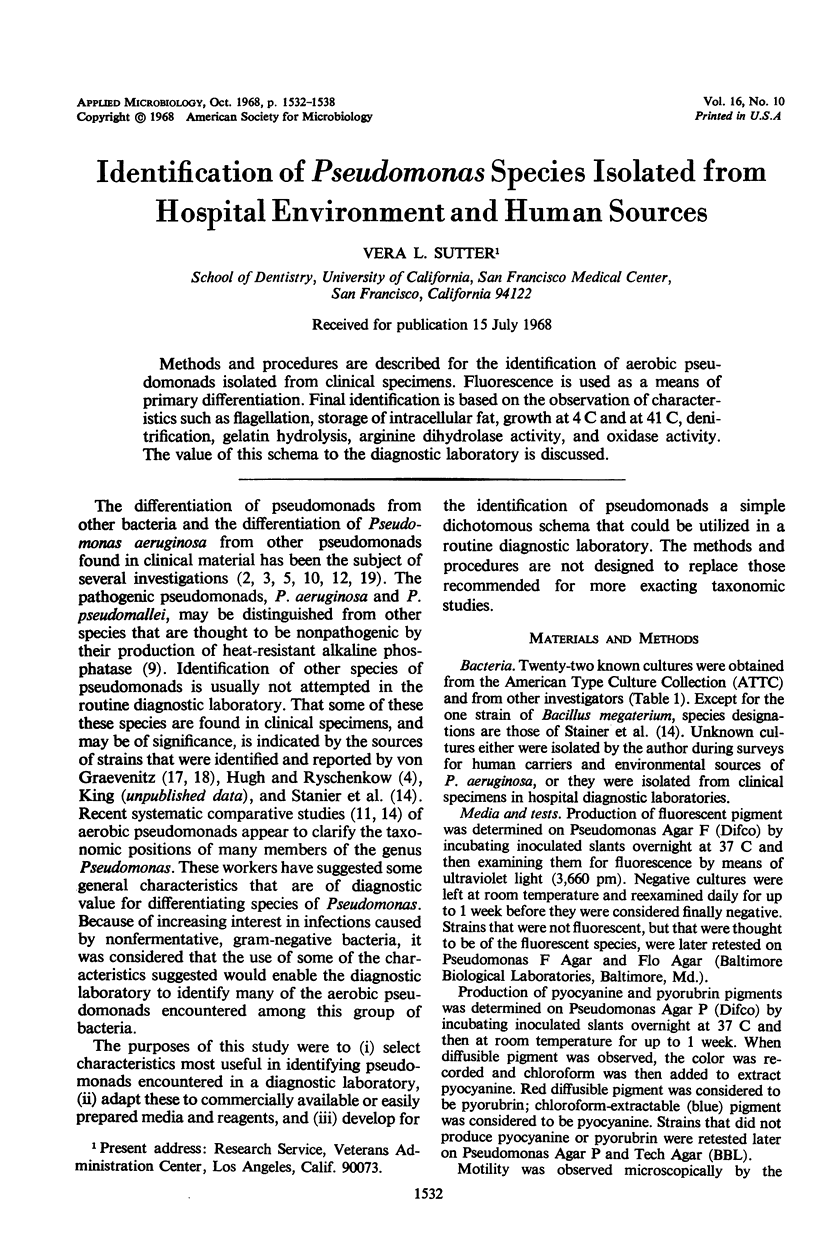
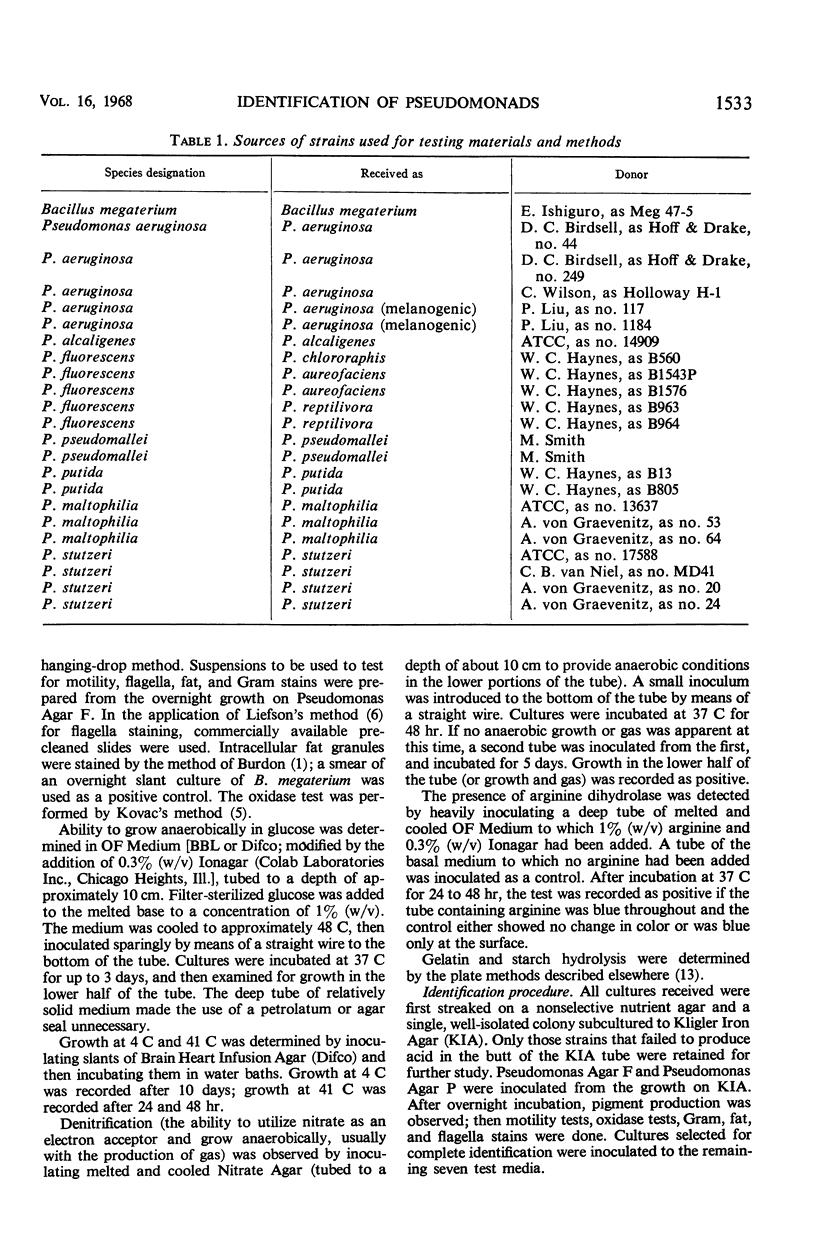
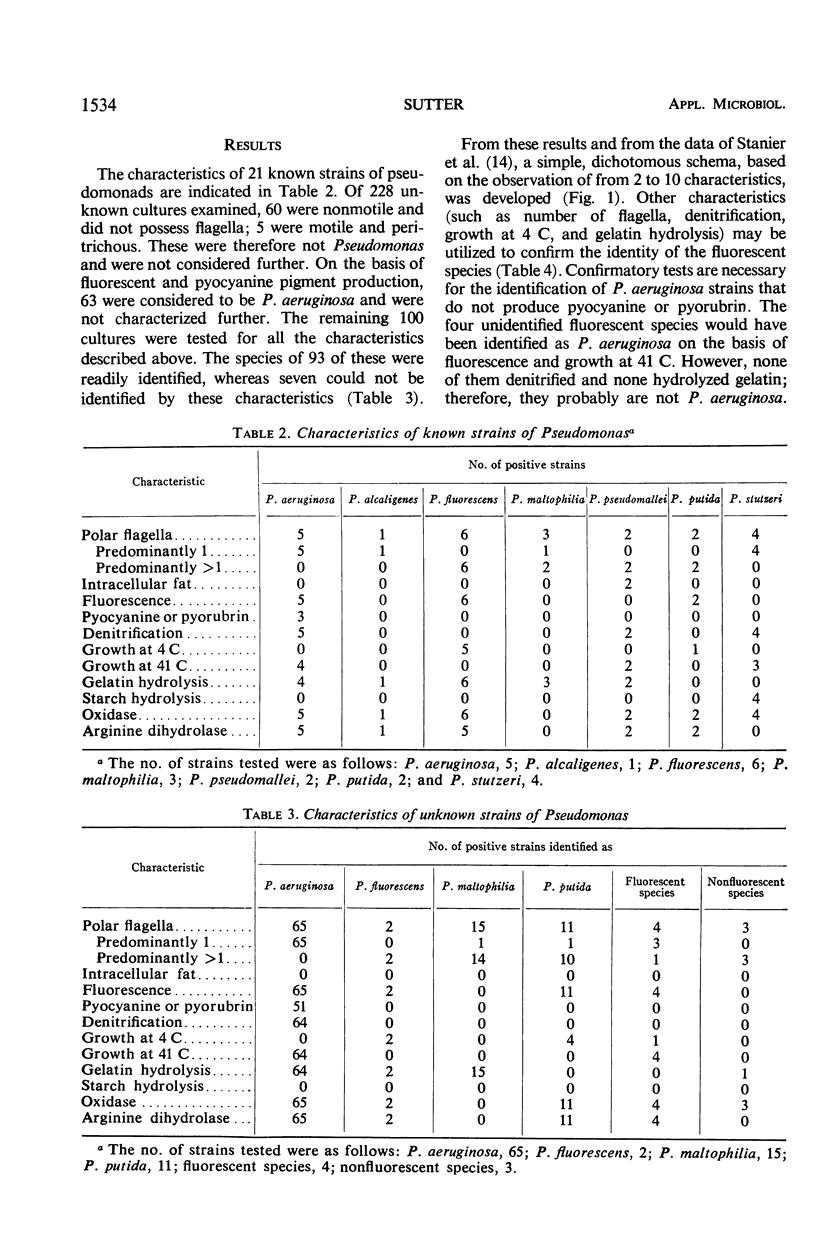
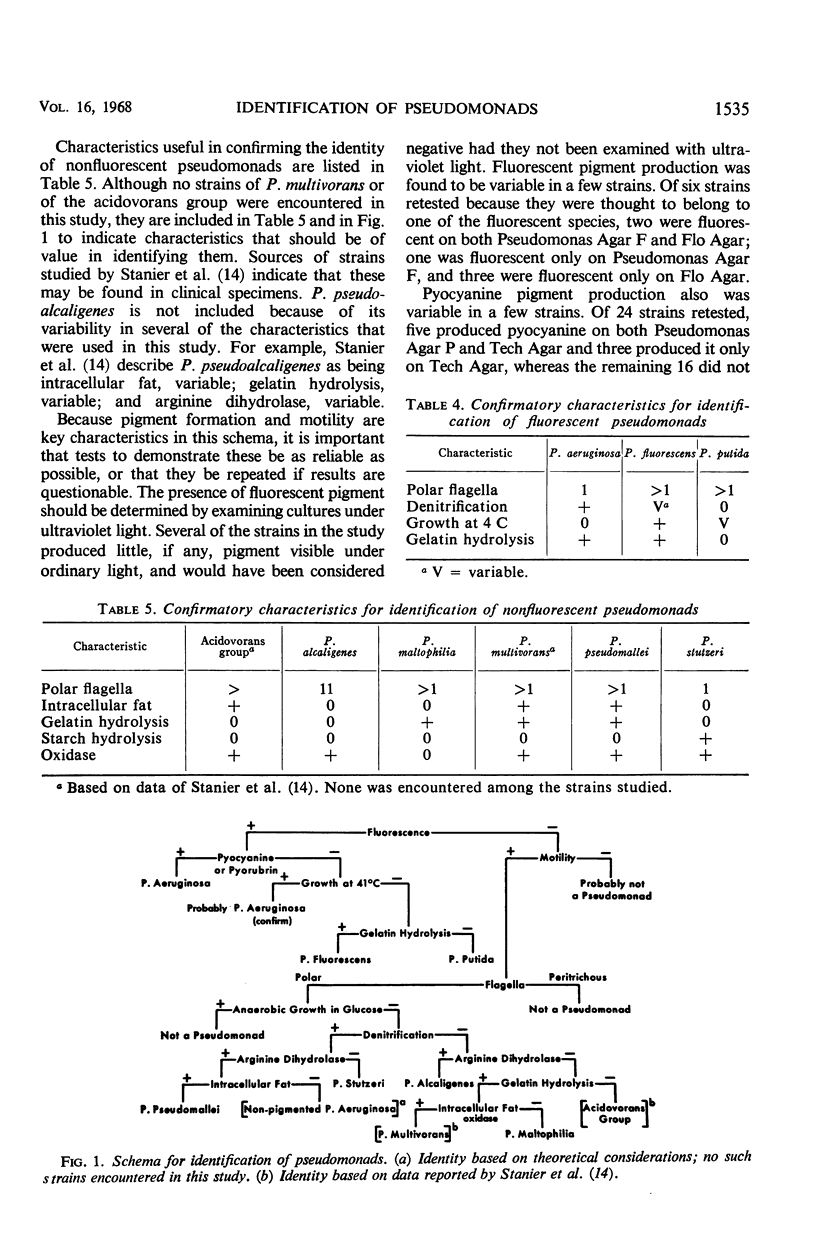
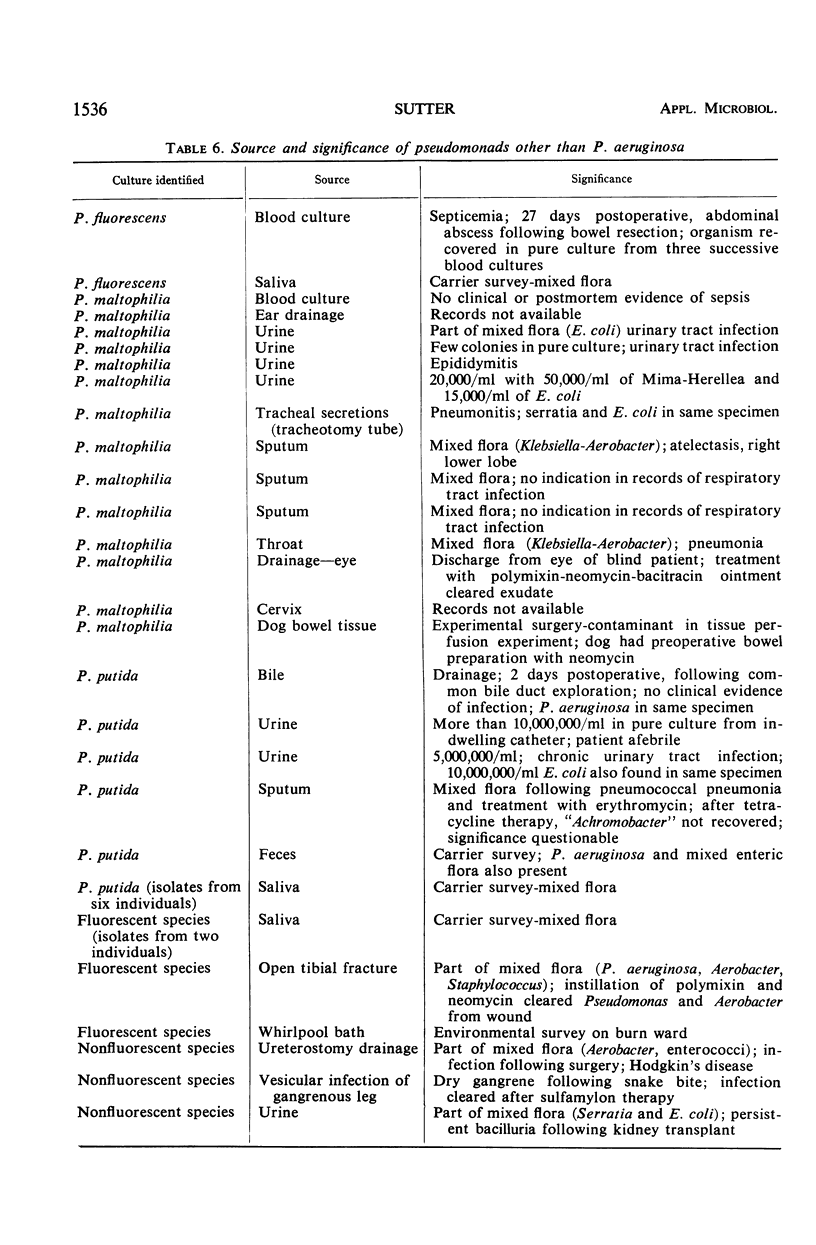
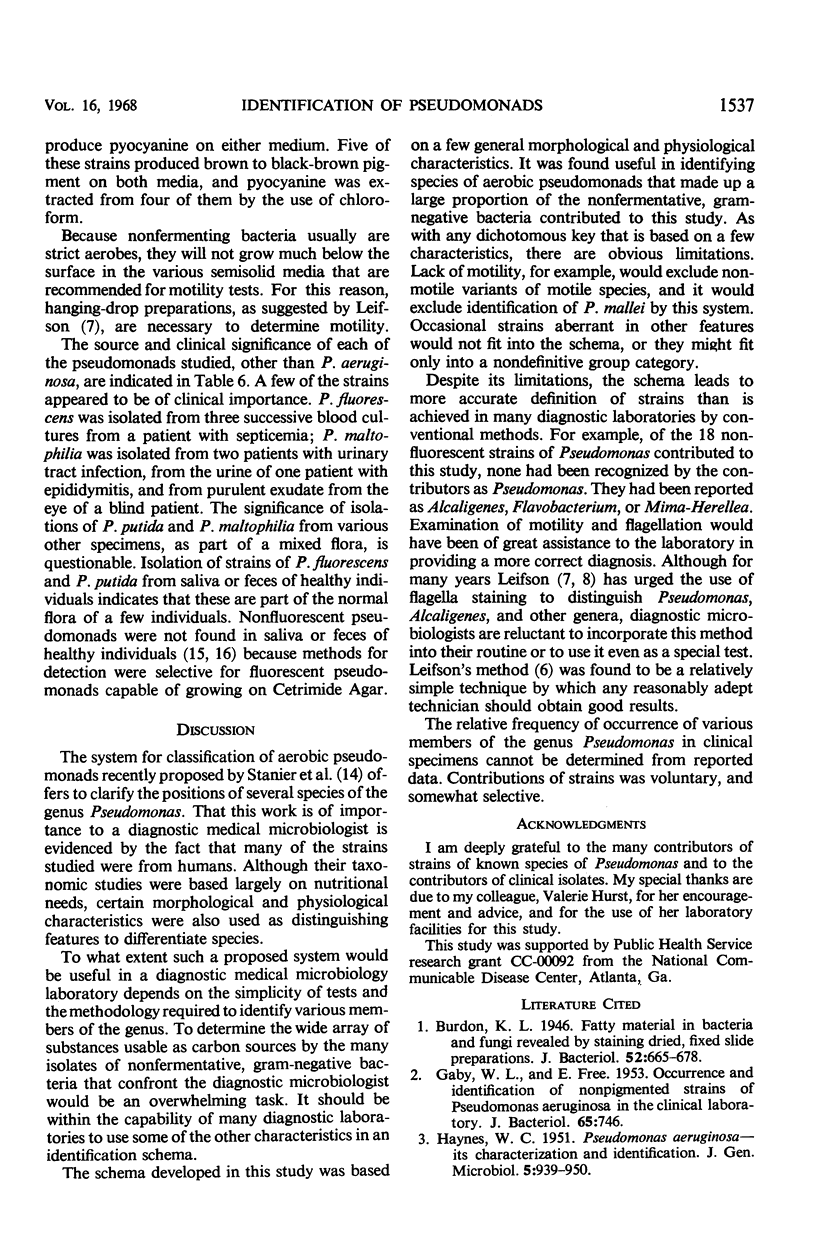
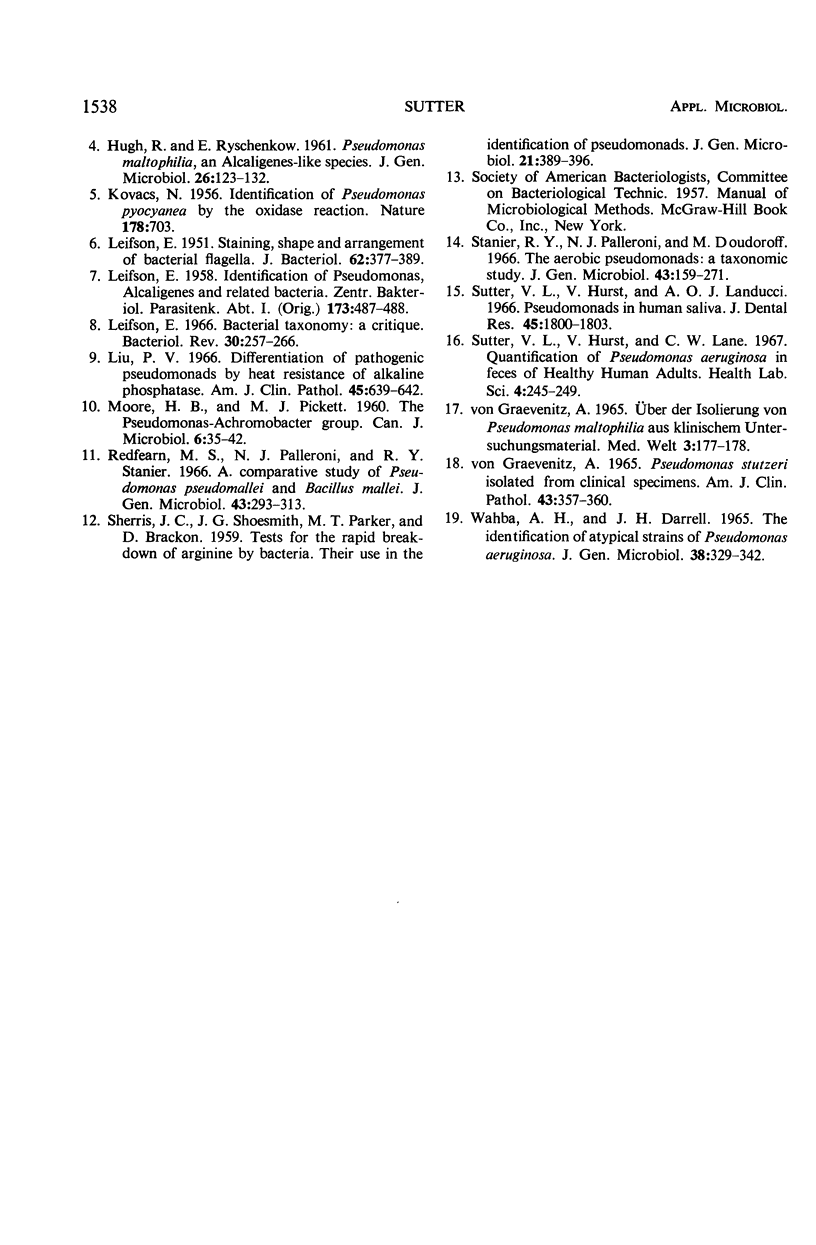
Selected References
These references are in PubMed. This may not be the complete list of references from this article.
- Burdon K. L. Fatty Material in Bacteria and Fungi Revealed by Staining Dried, Fixed Slide Preparations. J Bacteriol. 1946 Dec;52(6):665–678. doi: 10.1128/jb.52.6.665-678.1946. [DOI] [PMC free article] [PubMed] [Google Scholar]
- GABY W. L., FREE E. Occurrence and identification of nonpigmented strains of Pseudomonas aeruginosa in the clinical laboratory. J Bacteriol. 1953 Jun;65(6):746–746. doi: 10.1128/jb.65.6.746-746.1953. [DOI] [PMC free article] [PubMed] [Google Scholar]
- HAYNES W. C. Pseudomonas aeruginosa--its characterization and identification. J Gen Microbiol. 1951 Nov;5(5 Suppl):939–950. doi: 10.1099/00221287-5-5-939. [DOI] [PubMed] [Google Scholar]
- HUGH R., RYSCHENKOW E. Pseudomonas maltophilia, an alcaligenes-like species. J Gen Microbiol. 1961 Sep;26:123–132. doi: 10.1099/00221287-26-1-123. [DOI] [PubMed] [Google Scholar]
- KOVACS N. Identification of Pseudomonas pyocyanea by the oxidase reaction. Nature. 1956 Sep 29;178(4535):703–703. doi: 10.1038/178703a0. [DOI] [PubMed] [Google Scholar]
- LEIFSON E. Identification of Pseudomonas, Alcaligenes and related bacteria. Zentralbl Bakteriol Orig. 1958 Dec;173(5-6):487–488. [PubMed] [Google Scholar]
- LEIFSON E. Staining, shape and arrangement of bacterial flagella. J Bacteriol. 1951 Oct;62(4):377–389. doi: 10.1128/jb.62.4.377-389.1951. [DOI] [PMC free article] [PubMed] [Google Scholar]
- Leifson E. Bacterial taxonomy: a critique. Bacteriol Rev. 1966 Jun;30(2):257–266. doi: 10.1128/br.30.2.257-266.1966. [DOI] [PMC free article] [PubMed] [Google Scholar]
- MOORE H. B., PICKETT M. J. The Pseudomonas-Achromobacter group. Can J Microbiol. 1960 Feb;6:35–42. doi: 10.1139/m60-006. [DOI] [PubMed] [Google Scholar]
- Redfearn M. S., Palleroni N. J., Stanier R. Y. A comparative study of Pseudomonas pseudomallei and Bacillus mallei. J Gen Microbiol. 1966 May;43(2):293–313. doi: 10.1099/00221287-43-2-293. [DOI] [PubMed] [Google Scholar]
- SHERRIS J. C., SHOESMITH J. G., PARKER M. T., BRECKON D. Tests for the rapid breakdown of arginine by bacteria: their use in the identification of pseudomonads. J Gen Microbiol. 1959 Oct;21:389–396. doi: 10.1099/00221287-21-2-389. [DOI] [PubMed] [Google Scholar]
- Stanier R. Y., Palleroni N. J., Doudoroff M. The aerobic pseudomonads: a taxonomic study. J Gen Microbiol. 1966 May;43(2):159–271. doi: 10.1099/00221287-43-2-159. [DOI] [PubMed] [Google Scholar]
- Sutter V. L., Hurst V., Landucci A. O. Pseudomonads in human saliva. J Dent Res. 1966 Nov-Dec;45(6):1800–1803. doi: 10.1177/00220345660450063601. [DOI] [PubMed] [Google Scholar]
- Sutter V. L., Hurst V., Lane C. W. Quantification of Pseudomonas aeruginosa in feces of healthy human adults. Health Lab Sci. 1967 Oct;4(4):245–249. [PubMed] [Google Scholar]
- VONGRAEVENITZ A. PSEUDOMONAS STUTZERI ISOLATED FROM CLINICAL SPECIMENS. Am J Clin Pathol. 1965 Apr;43:357–360. [PubMed] [Google Scholar]
- WAHBA A. H., DARRELL J. H. THE IDENTIFICATION OF ATYPICAL STRAINS OF PSEUDOMONAS AERUGINOSA. J Gen Microbiol. 1965 Mar;38:329–342. doi: 10.1099/00221287-38-3-329. [DOI] [PubMed] [Google Scholar]


